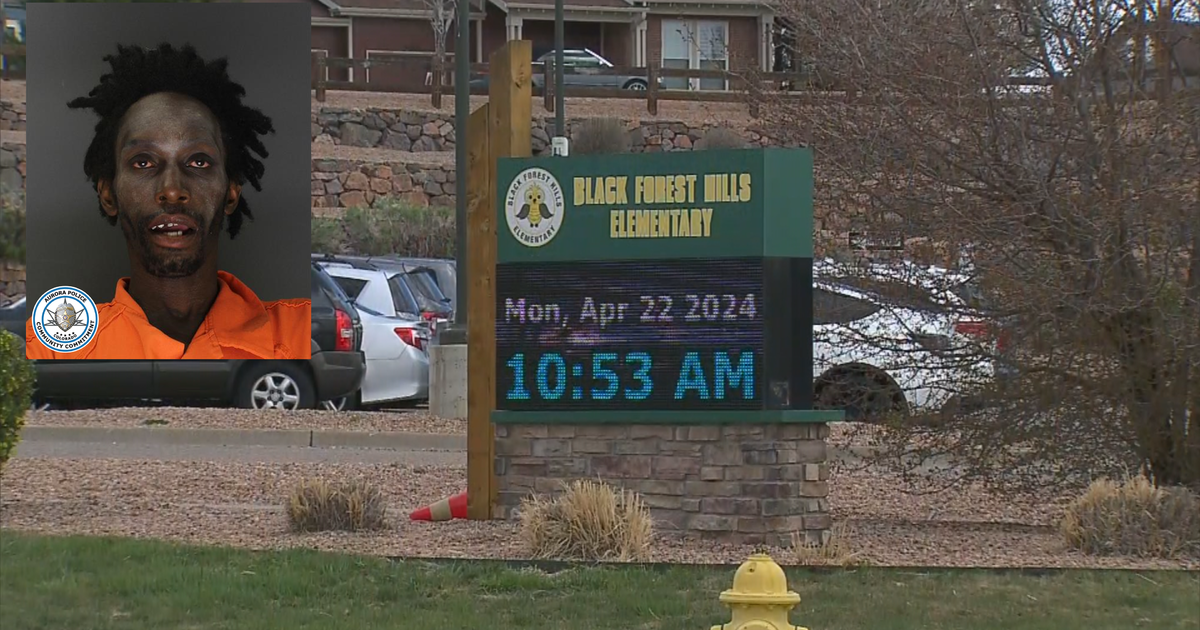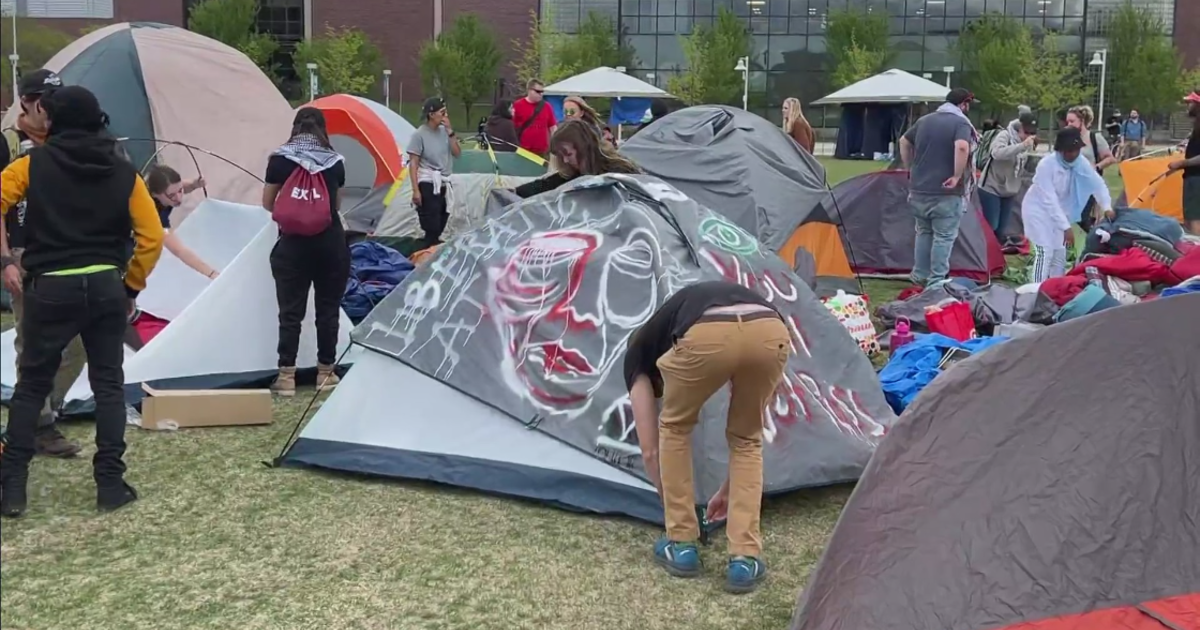New Forests, New Fire Hazards After Beetle Kill
FORT COLLINS, Colo. (AP) — In the Roosevelt National Forest northwest of Fort Collins, subalpine fir trees and aspens have started to grow in the shadows of dead lodgepole pine trees. It is becoming a new forest, with new hazards.
The mountain pine beetle epidemic that killed more than 6 million acres of lodgepole pine trees in Colorado is over, scientists say, and the ravaged forests have begun to rejuvenate. But the new, regrown forests will be different — aspen, spruce and subalpine fir trees will mature among acres of beetle-kill deadfall. From Roosevelt National Forest to Rocky Mountain National Park, the new forests will be more susceptible to wildfire, ecologists say.
Since the mountain pine beetle outbreak started in the early 2000s, Colorado's forests have been changing. When Skip Smith, head of Colorado State University's Department of Forest and Rangeland Stewardship, takes a walk through parts of the Roosevelt National Forest, he can see the forest of the future.
Sections of the national forest near Red Feather Lakes have been hit by two mountain pine beetle outbreaks in the past 40 years, Smith said. As Smith walked through the area in December, he found a mixture of old and newly dead lodgepole pines with young subalpine fir trees growing between them.
One of the "unintended consequences" of these new forests is that they "carry fire," Smith said.
Ecologists and fire behavior analysts are studying how these new forests will burn in the wake of the beetle-kill epidemic. They can use computer models to map wildfire growth, but more than anything, they need to see beetle-kill forests burn in order to understand how dead trees change fire behavior.
Wildfires in these forests have a few benefits, said Mike Battaglia, a forest researcher with the Rocky Mountain Research Station in Missoula, Mont. Not only do scientists need them as living experiments, but also the forest ecosystem relies on them, Battaglia said.
Although post-beetle kill forests present different fire risks, that's not necessarily a bad thing.
"We just need to allow these things to burn," Battaglia said. "We just need to demonstrate that fire is a part of these ecosystems."
If there is any hope that new lodgepole pines will grow, there must be fire. The trees also have serotinous cones, which will only spread their seed when opened by extreme heat. Brian Verhulst, a forester at Rocky Mountain National Park, said lodgepole pine forests are a "disturbance-dependent community."
While dependent on fire, lodgepole is also very resistant to it. Unlike spruce and subalpine fir trees, lodgepole pines naturally "prune" themselves, making it hard for fire to reach their upper branches.
But the forests growing back in the wake of the latest beetle-kill outbreak are not predominantly lodgepole, and will respond very differently to fire. Now that the lodgepole canopy is gone, trees that grew in its shadow will flourish, like the subalpine fir, scientists say. The aspen are largely fire-resistant, while spruce and subalpine fir trees are just the opposite.
"Subapline fir and spruce, those are highly susceptible to fire," said Battaglia.
Spruce trees have relatively thin bark. Fir have branches that grow close to the forest floor, Battaglia explained. A fire snaking around on the ground can easily work its way up into the tree's canopy and cause a crown fire. Crown fires burn across the tops of trees, spreading rapidly.
Battaglia is studying ways to make the new forest more diverse and more resilient by controlling tree growth. While he fears that a predominantly subalpine fir forest is more of a wildfire risk, there are benefits to letting fir or aspen forests grow.
"There's other things that we might want subalpine fir for, because it's a good habitat," he said. "It's not just about fire hazard, it's about multiple uses."
When the mountain pine beetle outbreak peaked in 2009, Coloradans were afraid that acres of red-needled and highly flammable trees would explode in a massive wildfire. Some Colorado communities spared no expense extinguishing small fires in their beetle-kill forests.
The red needles of newly dead beetle-kill trees were unmistakable eyesores that reminded residents, scientists and politicians that Colorado was prime to burn. After three to five years, when the red needles fell, the public perception was often that the fire danger was gone, said Matt Jolly, a forest researcher with the Rocky Mountain Research Station.
By studying wildfires from Montana to Colorado, Jolly has seen that beetle-kill trees play a big role in fueling wildfire, even after their needles have fallen. Now, Jolly specializes in a contrary theory, and he believes that long-dead beetle-kill forests should not be dismissed as fire hazards. By talking to firefighters, Jolly is trying to discern something that his computer models can't capture: How beetle kill forests burn.
"We always focus on this red phase," he said. "There's a lot of energy that can be released from the bowels of the trees, even if the needles have fallen off. Any time a standing dead tree is mixed in with living trees that can support a fire, the standing dead will fuel the fire."
Forests rarely have pure swaths of dead pine trees; they often have a mix of trees that can burn, or dead trees with their red needles, Jolly added.
"It's kind of contrary to what a lot of people think about fire behavior in these beetle-kill stands," he said. "They say once the needles fall off they don't pose a threat. They still have a tremendous amount of biomass that could be contributed — all of the parts of trees that are still in the system. We focus on the red needles a lot because we know they are flammable, but they also fall off."
Beetle-kill trees are capable of burning in more ways than one. They can fall to the forest floor, where deadfall can catch on fire and smolder. From what Jolly has seen, the dead trees can also carry crown fire.
Once the needles fall from the crowns of lodgepole pines, "they are exposed to the sun, and they are getting dried out," Jolly explained. In short, they make good firewood.
"With crowning, it's all about what's left after the (beetle) attack. If you have a swath of 100 percent mortality in lodgepole pines, you probably won't get crown fire," Jolly said. "But mixed with other live trees, there can be crown fire."
But even millions of acres of beetle kill trees aren't enough to start a massive wildfire. A few other things, weather among them, are necessary to prime the forest.
"The most important thing to remember from a fire perspective: Fuel is only part of the fire," Jolly said.
In Colorado, large swaths of beetle kill have to yet to burn, partly because lodgepole pine typically grow at higher elevations and get more moisture.
"It's not just all about the fuel, all of the factors have to align for fire to present in the area," Jolly said. But, with Colorado's warmer summers and winters, the factors have been aligning in favor of fire.
"Just because it doesn't happen, doesn't mean that it couldn't," Jolly said.
- By RYAN MAYE HANDY, Fort Collins Coloradoan
(© Copyright 2014 The Associated Press. All Rights Reserved. This material may not be published, broadcast, rewritten or redistributed.)



